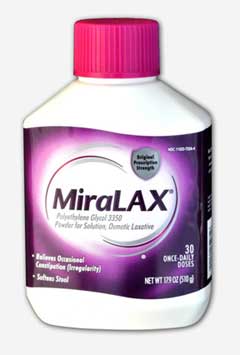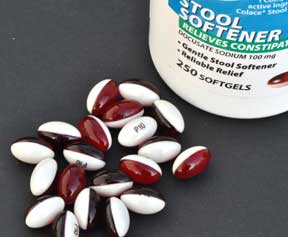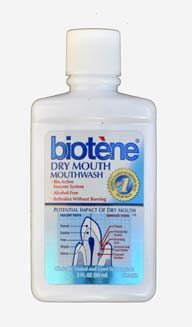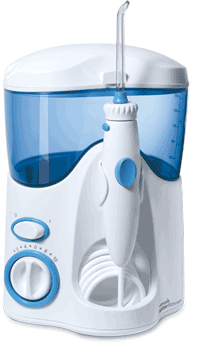Common Buprenorphine Side Effects
Headache, Constipation, Dry Mouth
Headache:

Headache is one of the most commonly reported buprenorphine side effects. A common remedy for headaches is aspirin or other OTC pain remedies with a glass of water; but water alone may be all that's needed. Medications, including laxatives and all opioids, can contribute to dehydration; and one of the first symptoms of dehydration is a headache. Just by staying hydrated throughout the day may be enough to solve the headache side effect, and reduce some of the other side effects as well.
Be mindful there are other things that can cause headaches such as caffeine and nicotine withdrawals. Drinking plenty of water is the easiest first step in trying to figure out the cause of headaches. But if the headaches persist, consult with a medical professional to be on the safe side.
Constipation:
 Many medications can cause constipation, including opioids, but especially long-acting opioids. Fast-acting, short-duration opioids, such as heroin and hydrocodone, produce periods of great effect and periods of lesser effect. It is during those periods of lesser effect that the body is able to produce bowel movements. However, long-acting opioids, such as buprenorphine, methadone and time-released oxycodone, have a continuous influence on the body without the period of lesser effect that would allow for bowel movements. This can lead to chronic constipation if preventative strategies aren't employed.
Many medications can cause constipation, including opioids, but especially long-acting opioids. Fast-acting, short-duration opioids, such as heroin and hydrocodone, produce periods of great effect and periods of lesser effect. It is during those periods of lesser effect that the body is able to produce bowel movements. However, long-acting opioids, such as buprenorphine, methadone and time-released oxycodone, have a continuous influence on the body without the period of lesser effect that would allow for bowel movements. This can lead to chronic constipation if preventative strategies aren't employed.
Constipation can become serious, and, in extreme cases, require surgery, but for most, it's an unnecessary inconvenience and discomfort. Fortunately, it is usually avoidable with OTC remedies, exercise, good diet and good hydration.
 If drinking more water along with a high fiber diet and increased exercise isn't enough, stool softeners such as docusate sodium (brand name Colace®) which comes in soft gel tablets are an option. This product softens stools and has a lubricating effect, but is not a laxative. Polyethylene glycol 3350 (brand name Miralax®) is a powder that dissolves into drinks and both softens stools and increases the frequency of bowel movements. It works by drawing water into the colon, and for that reason drink plenty of water to avoid dehydration - a contributor to constipation. According to an informal survey conducted online, either one or a combination of both has been effective at relieving most buprenorphine-induced constipation. Avoid harsh and habit-forming laxatives if possible; and, of course, consult your doctor before using any of the remedies mentioned here.
If drinking more water along with a high fiber diet and increased exercise isn't enough, stool softeners such as docusate sodium (brand name Colace®) which comes in soft gel tablets are an option. This product softens stools and has a lubricating effect, but is not a laxative. Polyethylene glycol 3350 (brand name Miralax®) is a powder that dissolves into drinks and both softens stools and increases the frequency of bowel movements. It works by drawing water into the colon, and for that reason drink plenty of water to avoid dehydration - a contributor to constipation. According to an informal survey conducted online, either one or a combination of both has been effective at relieving most buprenorphine-induced constipation. Avoid harsh and habit-forming laxatives if possible; and, of course, consult your doctor before using any of the remedies mentioned here.
New formulations of buprenorphine have better bioavailability, and as a result, less buprenorphine is required. The theory is, if less buprenorphine is inadvertently diverted to the GI track, constipation should be reduced.
Too late for prevention, I have severe constipation now, what can I do?
Dry mouth (xerostomia):
This may seem like an innocuous symptom and is not often cited as a buprenorphine side effect, but it can be very serious and very costly.
Saliva is the mouth’s primary defense against tooth decay, gum disease, and maintains the health of the soft and hard tissues in the mouth. Saliva washes away food and other debris, neutralizes acids produced by bacteria in the mouth and provides disease-fighting substances throughout the mouth.
With dry mouth (which is a side effect from all opioids) these benefits are diminished which allows bacteria to multiply and often leads to gingivitis which can lead to periodontitis disease, and eventually bone and tooth loss. - more-
- Gingivitis: This is the earliest stage of gum disease, some bleeding with brushing and inflammation of your gums caused by plaque buildup at the gumline. At this early stage in gum disease, damage can be reversed, since the bone and connective tissue that hold the teeth in place are not yet affected.
- Periodontitis: At this stage, the supporting bone and fibers that hold your teeth in place are irreversibly damaged. Your gums may begin to form a pocket below the gumline, which traps food and plaque. Proper dental treatment and improved home care can usually help prevent further damage.
- Advanced Periodontitis: In this final stage of gum disease, the fibers and bone supporting your teeth are destroyed, which can cause your teeth to shift or loosen. This can affect your bite and, teeth may need to be removed.
Bacteria in plaque are the main cause of gingivitis and periodontitis. Plaque is a biofilm that continuously forms on the teeth and under the gumline. These bacteria may release toxins, especially below the gumline, that irritate the gum tissue and cause inflammation. Toxins or poisons - produced by the bacteria in plaque as well as the body's "good" enzymes involved in fighting infections - start to break down the bone and connective tissue that hold teeth in place. The gums may eventually break down and separate from the teeth causing a deep space called periodontal pockets. These pockets are very difficult to clean, allowing the bacteria to grow and multiply. As the disease progresses, the pockets deepen and more gum tissue and bone are destroyed. When this happens, teeth are no longer anchored in place, they become loose, and tooth loss occurs.
Gum disease is the leading cause of tooth loss in adults, not tooth decay.
Other contributors to the risk and severity of periodontal gum disease and oral health problems are smoking and diabetes.
According to the CDC, researchers have uncovered potential links between gum disease and other serious health conditions. In people with healthy immune systems, the bacteria in the mouth that makes its way into the bloodstream is usually harmless. But under certain circumstances, these microorganisms are associated with health problems such as stroke and heart disease.
Avoid the pain and cost from the consequences of buprenorphine-induced dry mouth by keeping well hydrated, use OTC treatment for dry-mouth such as Biotene®, and pay especially close attention to good oral hygiene with routine dentist visits. Water flossers may be even more effective than floss at reducing plaque buildup. Preventative oral care might be the single best way to save money associated with your addiction treatment. Do not overlook the importance of it.
Above buprenorphine side effects can occur when dosed correctly. When doses incorrectly however, other symptoms have been reported. Here are some of them.
- Too high of a dose: lethargy, a medicated feeling ( described as “ cloudy” “foggy” or “ slow”), tiredness, nausea, constricted pupils in low light, a general unmotivated feeling, unjustified feeling of contentment, dehydration (indicated by dark urine)
- Too low of a dose: sweating, chills, goose bumps, dilated pupils in normal light, diarrhea, cramps, insomnia, nausea, anxiety, depression, dehydration, cravings
The optimal dose of buprenorphine, when prescribed for addiction, is the lowest dose that suppresses cravings and withdrawal symptoms. Dose requirements may change as treatment progresses.


